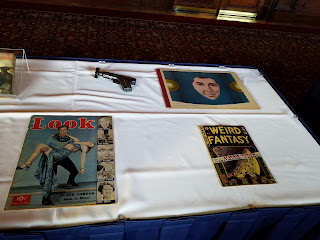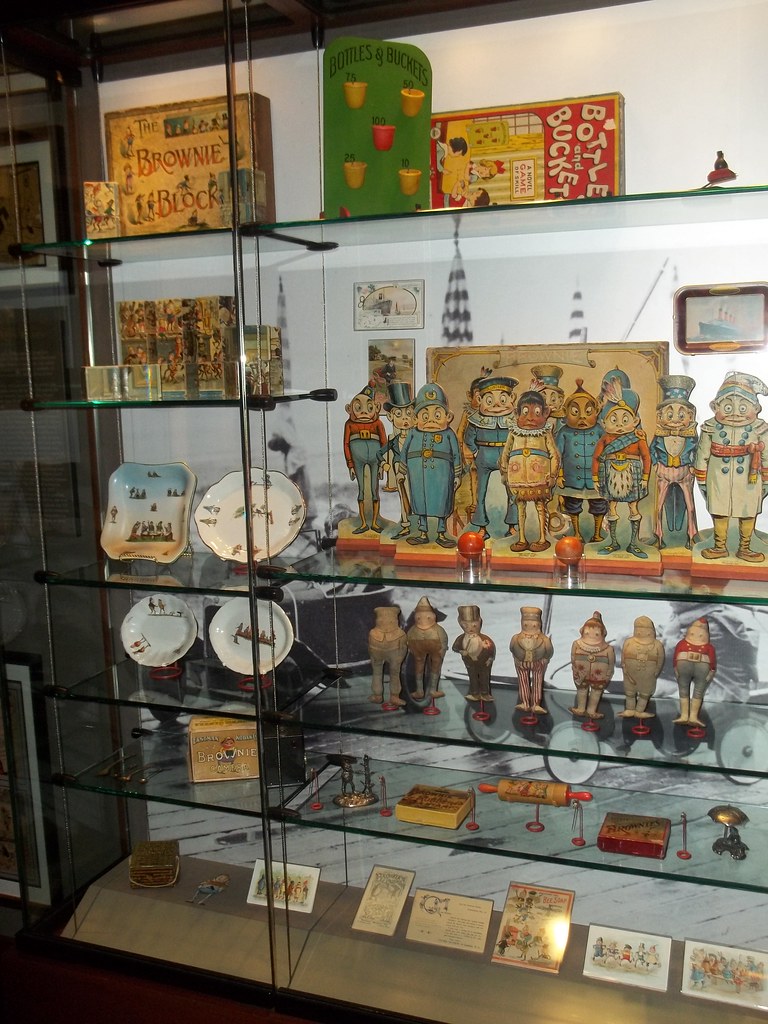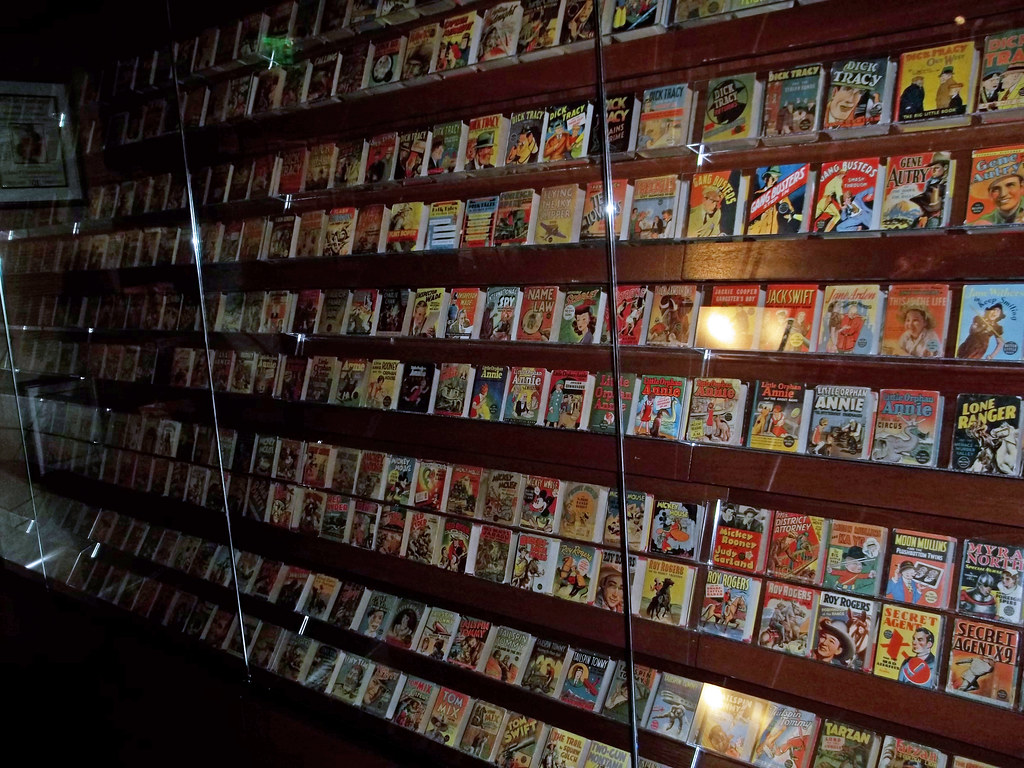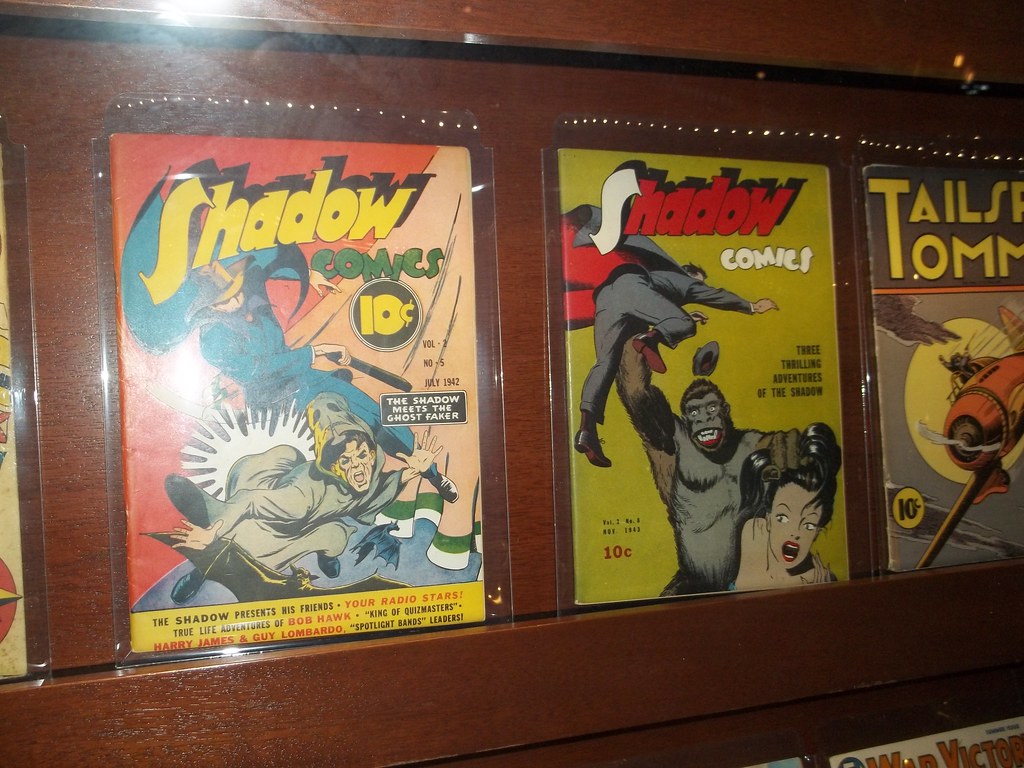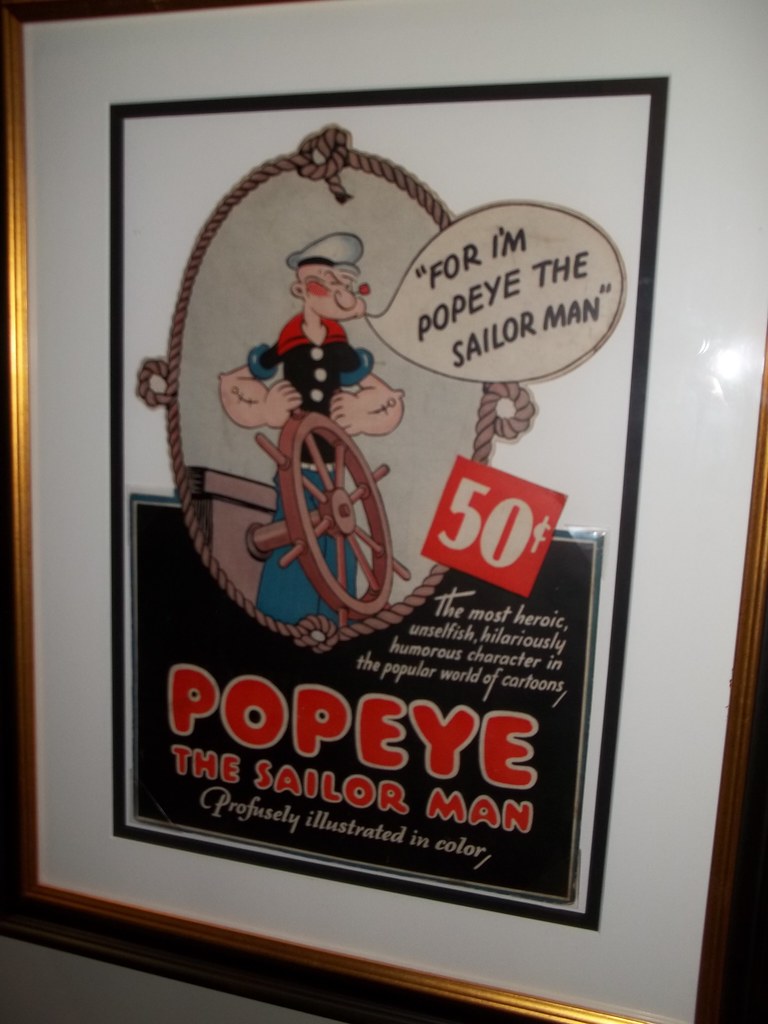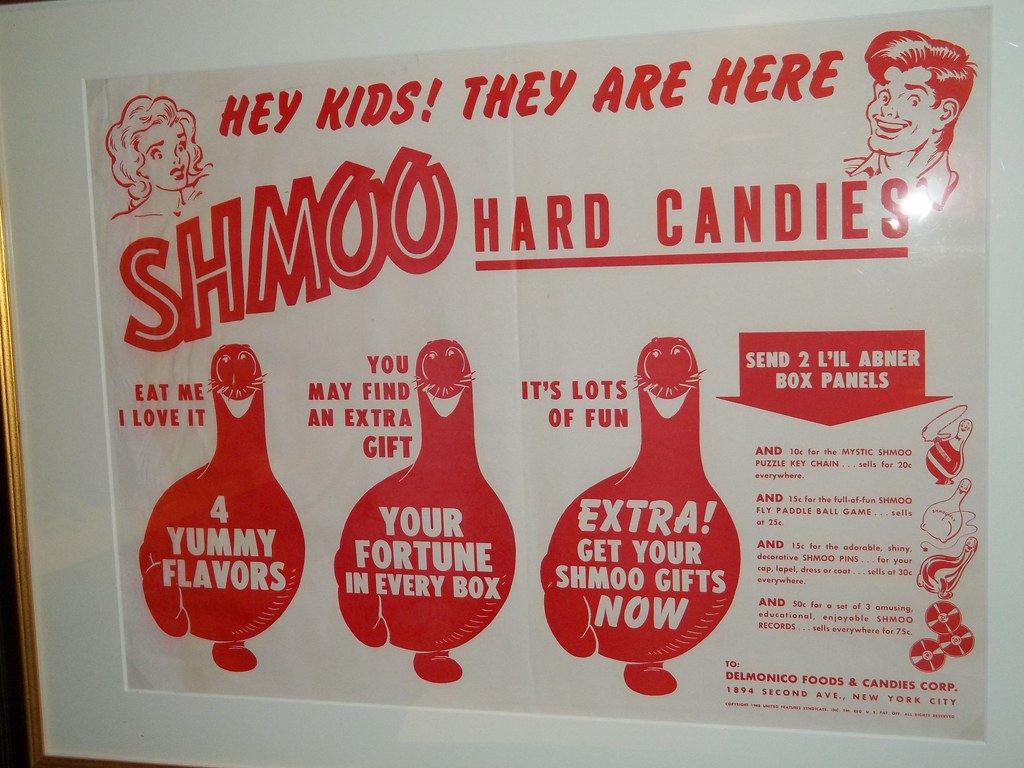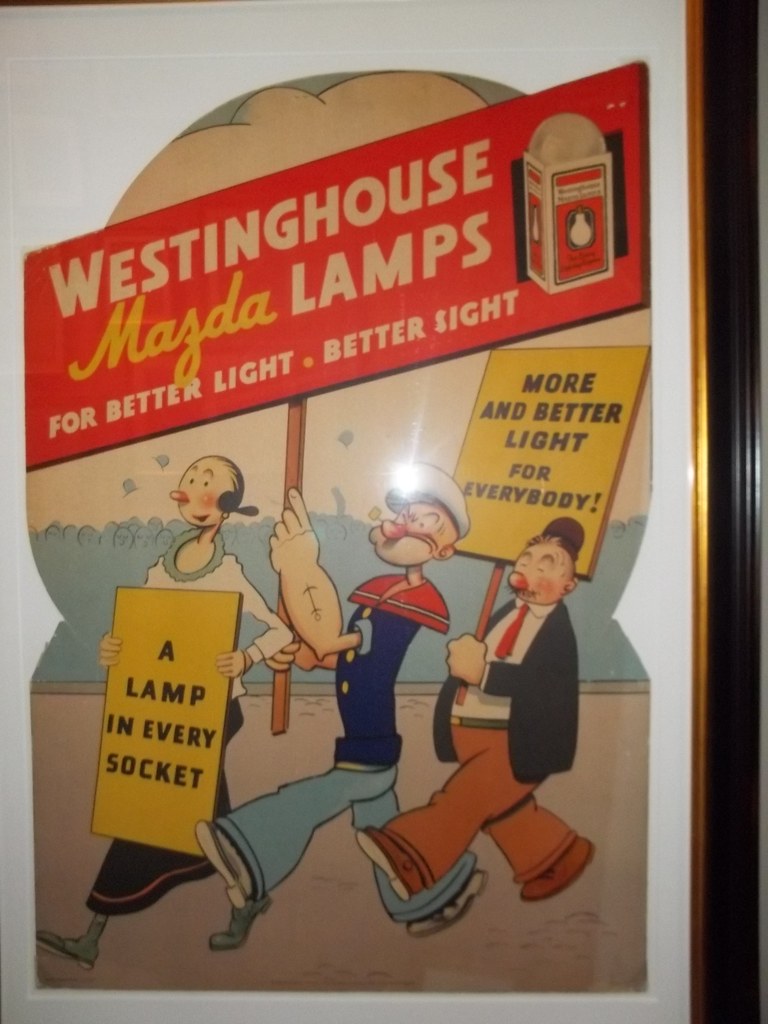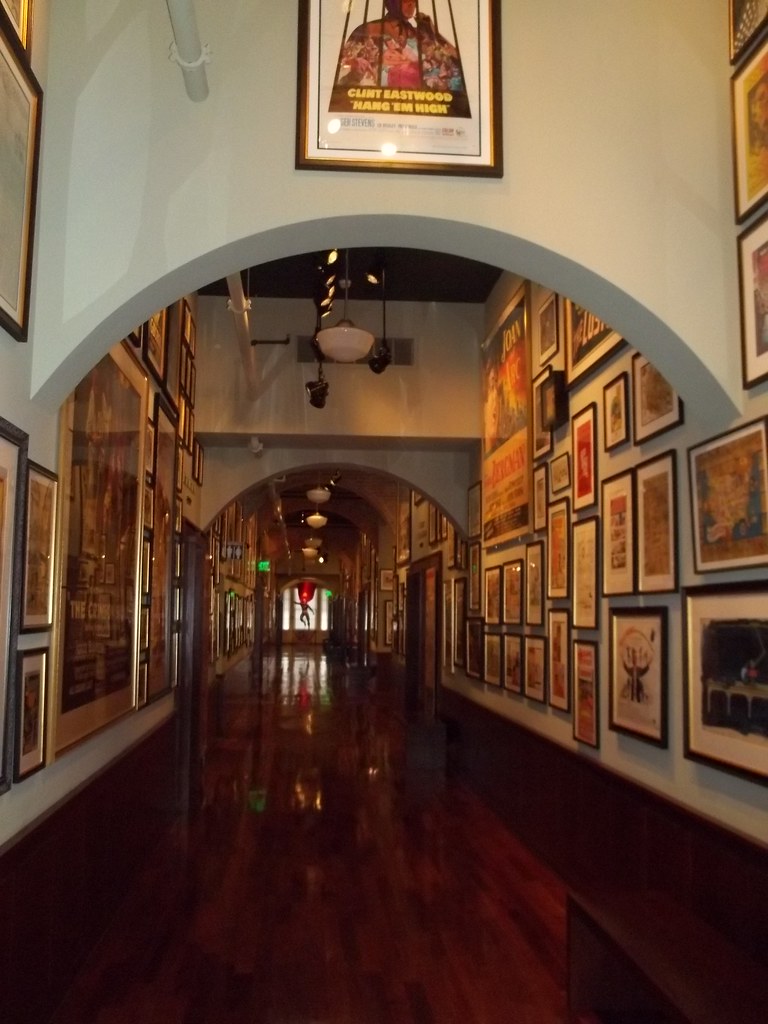 | Convention Recap: Baltimore Comic-Con The Baltimore Comic-Con was held on October 28-30, 2022, at the Baltimore Convention Center in Baltimore, Maryland. While many... |
| |
| | |||
 | Baltimore Comic-Con in Photos Baltimore Comic-Con was packed with thousands of attendees, comic creators, independent artists, and cosplayers, with plenty... Baltimore Comic-Con Interview: Brett Breeding Baltimore Comic-Con Interview: Cully Hamner Baltimore Comic-Con Interview: Fred Van Lente Baltimore Comic-Con Interview: Jim Starlin Baltimore Comic-Con Interview: Russ Braun Scoop November 4 2022 Scoop November 4 2022 | ||
Showing posts with label Steve Geppi. Show all posts
Showing posts with label Steve Geppi. Show all posts
Friday, November 04, 2022
Scoop on Baltimore Comic Con
Wednesday, November 07, 2018
Steve Geppi's collection goes on display at the Library of Congress
 by Mike Rhode (more photographs here)
by Mike Rhode (more photographs here)
The Library of Congress put a small fraction of items from Steve Geppi's donation on display on Election Day. The timing was probably a coincidence, and not an attempt to remind Americans of their shared love for popular culture including icons Superman, G.I. Joe, Mickey Mouse, Captain America, and Popeye, that brings the country together and drives the economy.
As previously noted here throughout the summer, Geppi's Entertainment Museum (GEM) closed in Baltimore and the Library was offered a choice of items from it. Exhibit director David Mandel introduced Geppi at a press preview, noting "Steve has donated over 3,000 items from his personal collection of comic books and popular art, the largest donation of its kind in the Library's history. The multi-million dollar gift includes comic books, original art, photos, posters, newspapers, buttons, pins, badges and related materials."
 "It is really an honor to donate this collection because quite frankly it belongs here," noted Geppi as began his remarks. He continued, "Going forward this is not a matter of me donating my collection, dropping it off and saying goodbye. I have plans to be involved going forward because who knows what evolves from this one event?" Geppi continually invoked nostalgia and childhood memories as the reason he collected, and that people visited his museum. "We don't know what triggers our memories. And yes, these comic books are valuable, but what the Library of Congress represents is the recognition and acceptance of them as fine art."
"It is really an honor to donate this collection because quite frankly it belongs here," noted Geppi as began his remarks. He continued, "Going forward this is not a matter of me donating my collection, dropping it off and saying goodbye. I have plans to be involved going forward because who knows what evolves from this one event?" Geppi continually invoked nostalgia and childhood memories as the reason he collected, and that people visited his museum. "We don't know what triggers our memories. And yes, these comic books are valuable, but what the Library of Congress represents is the recognition and acceptance of them as fine art."
2018 is the 90th anniversary of Mickey Mouse, and Geppi owned the storyboards for the cartoon Plane Crazy. "These are the first drawings of Mickey Mouse. in 1927, Walt Disney was on a train with [animator] Ub Iwerks and Lindbergh had just crossed the Atlantic. Walt said, 'You know the whole world is plane crazy right now. We need to do a cartoon short.' Most people when asked what was the first Mickey Mouse cartoon say Steamboat Willie, but that was the first cartoon released. There were two before it. The first one was Plane Crazy. They chose to release Steamboat Willie first because talkies were coming out [and it had whistling and music].
The original art on display for another first appearance is of Captain America. "Martin Goodman, who owned Timely Comics, which is now Marvel Comics, said to Joe Simon, of Simon and Kirby, "Go draw me a character called Captain America." The inscription on the drawing reads, "Martin - Here's the character. I think he should have a kid buddy, or he'll just be talking to himself all the time. I'm working up a script. Send schedule. Regards, Joe." The original model for G.I. Joe, the first action figure is also included in the exhibit's Patriotism case.
When asked if there's anything he's hoping to find and donate in the future, Geppi said, "In comics and animation, things were thrown away. I doubt seriously that the original art or cover to Action Comics #1 exists, but every time we say that, we find something that no one thought existed. As they say, it's the thrill of the hunt. I think from the Library's perspective, it will encourage more people to donate material that they think belongs. In addition, it will probably spook more stuff out of attics and hopefully whatever ends up here will be the best of the best. I still have a few more secrets that I have yet to give."
 Obviously the entire GEM display, a full museum with multiple galleries, couldn't be replicated in the Library. Initially, five small cases of material are on display in the historic Jefferson building, although Geppi repeatedly mentioned that a room would be forthcoming, presumably similar to the Bob Hope or Gershwin galleries. The cases are organized thematically by Patriotism, Early Comics Materials and Marketing, Mickey Mouse, Exploration, and About the Geppi Entertainment Museum. Early Comics features an 1818 comic magazine, The Idiot, or, Invisible Rambler as well as other nineteenth-century material including a printing block for the Yellow Kid, and oddly enough, boxes for Quick Mother's Oats and
Obviously the entire GEM display, a full museum with multiple galleries, couldn't be replicated in the Library. Initially, five small cases of material are on display in the historic Jefferson building, although Geppi repeatedly mentioned that a room would be forthcoming, presumably similar to the Bob Hope or Gershwin galleries. The cases are organized thematically by Patriotism, Early Comics Materials and Marketing, Mickey Mouse, Exploration, and About the Geppi Entertainment Museum. Early Comics features an 1818 comic magazine, The Idiot, or, Invisible Rambler as well as other nineteenth-century material including a printing block for the Yellow Kid, and oddly enough, boxes for Quick Mother's Oats and 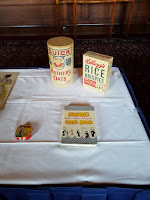 Kellogg's Rice Krispies which have no characters on them (and seem more appropriate for the National Museum of American History's food exhibit). Exploration has science fiction themes including a Superman Krypto-Raygun. About GEM ranges all over including a Captain Marvel Club code letter, a ticket to Woodstock, Pac-Man cereal, the packaging for McDonald's Star Trek Meal (1979), and a toy Beatles guitar.
Kellogg's Rice Krispies which have no characters on them (and seem more appropriate for the National Museum of American History's food exhibit). Exploration has science fiction themes including a Superman Krypto-Raygun. About GEM ranges all over including a Captain Marvel Club code letter, a ticket to Woodstock, Pac-Man cereal, the packaging for McDonald's Star Trek Meal (1979), and a toy Beatles guitar.
At the conclusion of the press conference, Librarian of Congress Carla Hayden, the former Baltimore librarian who agreed to accepting Geppi's collection, stopped in and the two posed for pictures.
The following is material that will not be on display including a Maud the Mule comic strip by Opper, a Cathy comic strip by Cathy Guisewite, Big Little Books, buttons and pins, and more pages from Mickey Mouse in Plane Crazy.
The following is material that will not be on display including a Maud the Mule comic strip by Opper, a Cathy comic strip by Cathy Guisewite, Big Little Books, buttons and pins, and more pages from Mickey Mouse in Plane Crazy.
Wednesday, June 20, 2018
Sara Duke discusses Steve Geppi's Museum donation to the Library of Congress
By Mike Rhode
Shortly after the announcement that Steve Geppi of Baltimore would be closing his Geppi’s Entertainment Museum in Baltimore and donating its holdings to the Library of Congress, I reached out to Library of Congress graphic arts curator Sara Duke (a personal friend of mine) for her thoughts on the donation.
MR: Whose idea was this donation? Did it come from the top down?
SD: My understanding is that Dr. Hayden and Steve Geppi have been long-term friends going back to her days at the Enoch Pratt library. The directive from inside the Library came from her, but the staff in the Prints and Photographs and Serials divisions were enthusiastic about the opportunity.
MR: Do you know what the offer consisted of originally? Was it the entire contents of the Geppi’s Entertainment Museum (GEM)?
SD: Yes, we were told that we could have whatever we wanted from the museum. We don’t collect many three-dimensional objects, even though we’re in the process of building three more storage modules at Fort Meade to store our book collection, but even with that we don’t have sufficient space to store objects properly. So the decision was made to be very selective about 3-D works of art, but to be inclusive of works of arts on paper, photographs, newsprint, comic books, Big Little Books, sheet music and even some recorded sound.
SD: Teams of people from the Prints & Photograph and Serials divisions went to Baltimore. We were provided with a spreadsheet from the Museum, probably created by an appraiser, and from the inventory list, we worked room by room deciding what was wanted, what was actually on the walls or in the cases but not on the inventory list, and trying to ascertain what would come to the Library. It took several trips to do that as you would imagine. We sat down as a team and we reached out to colleagues in other divisions about what they would and would not take. We created a list of desiderata to give to Mr. Geppi’s representatives.
MR: Was material that was not on display included as well?
SD: No.
MR: Where is some of the non-art or serial material such as the Big Little Books going?
SD: They’ll go to Rare Books. They already have a collection.
MR: Are they taking all of them or cherry picking?
SD: I believe they’re cherry picking so they don’t create a duplicate set. But the Serials division decided they would be inclusive and make the Geppi comic book set the exhibit-only set, while the existing comics in the Library would be the reference collection that researchers could handle. It’s been a research collection, and people have been looking at them… it’s a double-edged sword. If we never let anybody look at them, they’d be pristine, but we’re a research institution and people are supposed to look at and handle things.
MR: I’ve seen some lists of the donation in various press releases. What are the highlights for you or your department?
SD: There are memorable pieces like the nine-sheet Bambi poster. We have a few nine-sheet posters in our collection, some attached and some detached, but that’s in spectacular condition. I know we have the display space for it at the Library of Congress, but it’s never going to look like it did in Geppi’s Entertainment Museum. That makes me sad. It was an over-the-top lovely gem (pun intended) of a museum. What stood out to me beside that? There’s some great comic strip drawings, an overwhelming number of posters -- some of which may be duplicates of what we have, but without taking a photograph of every one on the wall and comparing them against our collection, we just don’t know, and we didn’t have time to do that. So we’re taking every single poster that was on the wall.
And just because something wasn’t on the walls doesn’t mean it’s gone from the collection. Michael, the curator there, said he was forever moving art in and out. Between the times we went out during a snowstorm in March and then again in April, he had rotated things from the warehouse and the Museum.
MR: What does that mean for you guys? If you get to pick from the Museum, does that include the warehouse too?
SD: That has not yet been offered to us.
MR: When did this start? Obviously it would be a complex negotiation.
SD: Late last year, or very early this year. Mr. Geppi came to visit the Library two or three times last year. One time he saw the original art for Amazing Fantasy #15 (aka the first appearance of Spider-Man – MR). He came back down for a private conversation with Dr. Hayden and then we started talking about going up to Baltimore to figure out what it would mean as an institution to absorb his collection. For a lot of institutions, absorbing 3,300 items would be overwhelming but for us it’s routine.
MR: The material is going to be divided by divisions when stored in the Library?
SD: Right. There’s some pressed records that are quite rare that are going to Recorded Sound. There are some videogame sets that the Motion Pictures Division has expressed interest in. The Rare Book Division is in charge of the Big Little Books and maybe some of the early bound volumes. Prints & Photograph and Serials are the benefactors, overwhelmingly.
MR: Will there be a Geppi Collection, or is the material being integrated into existing material? Is there going to be an organizing principle so someone could rebuild the collection?
SD: That will depend, division by division. We’ll be sitting down to hammer out a plan, but Prints & Photographs will record the provenance to the nth degree and it will be known as the Stephen A. Geppi Collection of Comics and Graphic Arts.
MR: Is he giving you any money to catalog the material?
SD: No.
MR: Do you have any more personal favorites besides Bambi?
SD: It’s a sweet poster, but there’s some spectacular early Yellow Kid material, there’s some really great trading cards, some patches minor league baseball teams and a poster marketing them… What’s really intriguing in the ability with this acquisition to tell a story that you would think we could tell through copyright deposits, but cannot. Some of it is so ephemeral that I don’t think people thought to copyright it and some of it, more recent material, hasn’t been required to be deposited for copyright so we just didn’t acquire it. As an institution that has been so dependent on copyright deposit for its growth, until 1978 when the rules about what was required to be deposited changed, it’s really refreshing to have a popular culture collection come into the institution. It resets that type of collection and gives us what we’re lacking.
MR: I’ve heard that the Copyright department doesn’t necessarily keep a lot of what comes in…
SD: The majority of material sent in is reproductions, so if it’s not up to a standard that we consider acceptable, such as color photocopies, we are selective about what we acquire for the permanent collections. We want as original and as best an edition as we can possibly have. The changes in copyright law meant that people have copyright protection from the moment of creation so they no longer have to pay a fee to protect their interest and copyright, so we just don’t get the volume that we got 100 years ago.
MR: Did you take the Yellow Kid buttons?
SD: We’re intending to. We’re also getting the Mickey Mouse animation drawings for Plane Crazy, so sitting next to the ‘birth certificate’ for Spider-Man will now be the ‘birth certificate’ for Mickey Mouse and that’s a pretty enormous acquisition for the Library.
MR: The ones he donated to Mort Walker’s museum and then had to buy back when they auctioned them off to keep their doors open?
SD: It’s sad [when you consider] the number of cartoon museums that have closed in the last twenty years. Art Wood’s to Mort Walker’s to the Toonseum in Pittsburgh, and now Geppi. It’s a hard economy for something that’s so popular with America. It’s interesting that George Lucas is now opening an entertainment museum in California, but it seems like it’s a hard sell. Why is that? Is it that people of a certain income are willing to patronize fine art, but are not willing to patronize cartoon art? Is it just not enough of a draw to make people go back again and again? I certainly went to the Geppi Museum several times, and my son always had it on his required activity list for Baltimore. But apparently it wasn’t on enough people’s required activity list unfortunately. So who has benefited? It’s been larger repositories.
MR: My suspicion is that most mid-size cities have a comprehensive art museum, such as Indianapolis or Omaha, that covers 1000 years of art history without anyone thinking twice about it, but a standalone specialty museum probably always have more trouble than any other type. You can have a science, or natural history, or art museum and people can find enough different things to keep coming back for. When it’s a specialized museum that doesn’t change, or not as often, it probably affects attendance.
SD: For small museums, with small staffs, I think it’s hard to build programming to get people in the door consistently. And for all museums, they’ll never make more than 15% of their revenue in admission fees. They’re dependent on grants, memberships, special events, things like that.
MR: What else should I have asked about?
SD: What I try to make clear to everybody, is that while the Library is honored to have this collection, we are very saddened by the circumstances that led it to coming here. They did the right thing. The museum code of ethics says you don’t sell your collection, but you donate it to another institution. It’s a magnanimous gift. It really is. Quite frankly, it blows my socks off. We could never afford to buy or build this collection. People think the Library of Congress has bottomless pockets, but we don’t. We can’t afford to compete at auction for comic books and cartoon art and posters. We can buy selectively, but very few items come to us each year by purchase compared to what we get from gifts. This gift is amazing.
MR: There’s always going to be a difference between a museum, a library, and an archive, and no museum can put everything on display anyway.
SD: Right, and our exhibit space represents the wealth of the Library’s collections, so the graphic arts display is always going to be much smaller than GEM’s footprint. We will start exhibiting selections later this summer and we have every intention of creating a space in which comics and other works from the collection are featured prominently. It’s going to be very difficult to get it down to the Library. The Bambi and Ten Commandments posters are 90 x 90 inches. Finding physical room to store it and make it accessible to researchers is going to be challenging to say the least, but it’s a labor of love.
Sunday, June 03, 2018
Arnold Blumberg, Geppi's Entertainment Museum's first curator, remembers the museum

by Mike Rhode
Geppi's Entertainment Museum (GEM) in Baltimore closed for good earlier today. It was one of my favorite museums with an overwhelming amount of fantastic material on comics and cartoons and I'm sorry to see it go. The only positive thing is that Steve Geppi is donating a lot of the Museum (3,300 items I'm told) to the Library of Congress in the coming weeks.I've reached out to a few people to get their thoughts on the Museum. Dr. Arnold Blumberg was the first curator of the museum, and was very generous with his time over the years. As he has been this weekend, when he answered a few questions about the museum and his role in it.
I was proud to be Curator and part of the team that developed a one-of-a-kind display of 230 years of pop culture history, shedding light on the many ways we defined ourselves through the decades as a nation and as people. I think it's wonderful that so many media artifacts will now be available for public view. The collection will surely provide opportunities for future historians to examine the ways entertainment shaped and reflected the American experience
When were you curator?
I was Curator beginning in the summer of 2005, hand-picked by John Snyder, and worked on building the museum with the rest of the team for that next year until our opening on Sept. 2006. John was President of Geppi's Entertainment Museum when we started, and had already been running Diamond International Galleries before that and also Gemstone Publishing, which is where I was working as Editor when he tapped me to move over to the museum. I left in October 2010.
What did the work entail?
I was charged with being the intellectual custodian of the history behind all those amazing artifacts, coordinating educational and other programming in conjunction with other staff members, conducting tours and doing community and media outreach - lots of morning TV interviews! - writing most of the material on the walls and in various publications associated with the museum, and helping to care for and manage the collection alongside Registrar Andrew Hershberger. There were lots of other things in an average day, but that's the basic overview.
What was your favorite item or exhibit?
My favorite room was the museum within a museum - the comic book room, showcasing the history of that medium from periodicals and artwork stretching back centuries to the formal comics timeline of the 1930s to the present. One of my personal favorites was the Oscar Goldman action figure from the Six Million Dollar Man Kenner toy line in the 1970s room, mainly because it was one of the few things from that line that I never got myself.
Did you expect an outcome like this? It's a pretty munificent gift.
It's been years since I've been involved in the museum or in contact with anyone associated with it, so I have no particular insight into the reasons behind the museum's closure and the donation of the collection, but it's nice to know that all those items that give people so much joy and allow them to travel back into their own pasts will now be made available to view for free and at a facility that will respect their historical importance and preserve them for future generations.
 After leaving the Museum, you put together your own publishing house?
After leaving the Museum, you put together your own publishing house?Yup, since 2012 we've put out a number of titles from ATB Publishing, and we just put out our first book on comics and superheroes, Storytelling Engines, this past May!
We'll be checking in with Arnold in the coming weeks to find out more about how he went from being a museum curator, to a college professor, to a book author and publisher...
Wednesday, May 30, 2018
Library of Congress Receives Valuable Comic Book, Popular Art Collection from Steve Geppi
 |
| NEWS from the LIBRARY of CONGRESS |
May 30, 2018
Largest Donation of Comic Books in Library History Includes the
Original Storyboards for the Creation of Mickey Mouse
The Library of Congress announced today that collector and entrepreneur Stephen A. Geppi has donated to the nation's library more than 3,000 items from his phenomenal and vast personal collection of comic books and popular art, including the original storyboards that document the creation of Mickey Mouse. This multimillion-dollar gift includes comic books, original art, photos, posters, newspapers, buttons, pins, badges and related materials, and select items will be on display beginning this summer.
The Stephen A. Geppi Collection of Comics and Graphic Arts has been on public display in Baltimore, Maryland, for the past decade and is a remarkable and comprehensive assemblage of popular art. It includes a wide range of rare comics and represents the best of the Golden (1938-1956), Silver (1956-1970) and Bronze (1970-1985) ages of comic books. The mint-condition collection is also noted for its racially and socially diverse content as well as the distinctive creative styles of each era.
The collection also includes motion picture posters and objects showcasing how music, comic book characters, cultural icons and politicians were popularized in the consumer marketplace. Among these are Beatles memorabilia, a collection of flicker rings popularizing comic book characters and political figures such as Martin Luther King Jr., Richard Outcault's The Yellow Kid printing blocks and the No. 2 Brownie camera model F from Eastman Kodak Company.
One signature item in the collection represents the birth of one of animation's most iconic characters. Six rare storyboards detail the story layout and action for Walt Disney's 1928 animated film, "Plane Crazy." It was the first Mickey Mouse cartoon produced, but the third to be released, after sound was added, in 1929. "Steamboat Willie" was the first Mickey Mouse cartoon to be theatrically released, on Nov. 18, 1928, which marks its 90th anniversary this year.
"The Library of Congress is home to the nation's largest collection of comic books, cartoon art and related ephemera and we celebrate this generous donation to the American people that greatly enhances our existing holdings," said Librarian of Congress Carla Hayden. "The appeal of comic books is universal, and we are thrilled that this new addition to the collections will make them even more accessible to people worldwide."
"When I began collecting comic books as a young boy and then in earnest in 1972, I would have never dreamed that a major portion of my collection would find a home at the Library of Congress, alongside the papers of 23 presidents, the Gutenberg Bible and Thomas Jefferson's library," said Geppi. "This gift will help celebrate the history of comics and pop culture and their role in promoting literacy."
Geppi is the owner and CEO of Diamond Comic Distributors, based in Baltimore. A fan of comic books as a child, he later began seriously collecting them and turned his passion into a series of pop culture businesses. Over the years, Geppi amassed one of the largest individual collections of vintage comic books and pop culture artifacts in the world.
Geppi will continue to be an active collector and will be considering other donations to the Library of Congress in the future. "I view this newly established connection to the Library of Congress as the beginning of a long-term relationship," said Geppi.
The Library holds more than 140,000 issues of about 13,000 comic book titles, dating back to the 1930s. The collection includes many firsts and some of the most important comics in history, including the first comic book sold on newsstands; the first series featuring Batman and other iconic characters; and All Star Comics #8, which introduced fans to Wonder Woman. The Library also holds a copy of Amazing Fantasy #15, which tells the origin story of Spider-Man, and the original artwork that Steve Ditko created for that issue. The Geppi Collection expands and enriches this strong foundation and fills gaps in specific issues.
The Serial and Government Publications Division maintains one of the most extensive newspaper collections in the world. It is exceptionally strong in United States newspapers, with 9,000 titles covering the past three centuries. With more than 25,000 non-U.S. titles, it is the largest collection of international newspapers in the world. Beyond its newspaper holdings, the division also has extensive collections of current periodicals (40,000 titles), comic books (13,000 titles) and government publications (1 million items). The collection of comic books is available for research use by scholars, collectors and other researchers in the Newspaper and Current Periodical Reading Room. More information can be found at http://www.loc.gov/rr/news/
The Library of Congress Prints and Photographs Division holds more than 15 million photographs, drawings and prints from the 15th century to the present day. International in scope, these visual collections represent a rich array of human experience, knowledge, creativity and achievement, touching on almost every realm of endeavor—science, art, invention, government and political struggle, and the recording of history. More information can be found at loc.gov/rr/print/.
The Library of Congress is the world's largest library, offering access to the creative record of the United States—and extensive materials from around the world—both on-site and online. It is the main research arm of the U.S. Congress and the home of the U.S. Copyright Office. Explore collections, reference services and other programs and plan a visit at loc.gov, access the official site for U.S. federal legislative information at congress.gov and register creative works of authorship at copyright.gov.
# # #
PR 18-072
05/30/18
ISSN 0731-3527
|
Friday, July 09, 2010
Bill Caldwell, former Geppi's Comics World manager
Scoop is reporting that Bill Caldwell, former Geppi's Comics World manager, has died. I assume he managed one of the stores in the area.
Thursday, April 08, 2010
Steve Geppi's unsold home auctioned by bank
C'mon people - buy MORE COMICS!
Auction today for Geppi mansion
Green Spring Valley estate has outstanding mortgage debt of $3.25 million
By Lorraine Mirabella
Baltimore Sun April 8, 2010
Auction today for Geppi mansion
Green Spring Valley estate has outstanding mortgage debt of $3.25 million
By Lorraine Mirabella
Baltimore Sun April 8, 2010
Sunday, January 31, 2010
A collector's account in the Post
There's quite a bit of overlap between book and comic book collectors these days...
Dispatch from the hoard
People who collect things and those who don't can be friends
Washington Post Sunday, January 31, 2010
The accompanying photo of generic comic books is actually Steve Geppi's collection at the Geppi Entertainment Museum in Baltimore
Dispatch from the hoard
People who collect things and those who don't can be friends
Washington Post Sunday, January 31, 2010
The accompanying photo of generic comic books is actually Steve Geppi's collection at the Geppi Entertainment Museum in Baltimore
Friday, January 09, 2009
Geppi luncheon talk covered.
"Steven Geppi: Hard Work Gets Noticed," Jack McLaughlin, HBL Editor, Harford Business ledger 12/26/08. This was linked to from Scoop which is Diamond's weekly collector's e-newsletter.
Tuesday, September 30, 2008
Geppi's Entertainment Museum rent?
Tom Spurgeon found this article - "Geppi, state ensnarled in museum rent dispute," LIZ FARMER, Maryland Daily Record Business Writer, September 29, 2008. If you haven't seen the museum yet, check it out. It's amazing.
Friday, May 09, 2008
America's first political cartoon appeared today
According to the Associated Press's Today in History, Ben Franklin's 1754 cartoon of the thirteen colonies as a cut-apart snake appeared with the caption "Join or Die" appeared today in his newspaper, the Pennsylvania Gazette. Why are mention it here? There's an original on display in Baltimore in Geppi's Entertainment Museum. It's tiny, but cool. If you don't live around here, an easy place to see it was in the intro credits to HBO's John Adams miniseries. Special update: Also Richard Thompson redrew it and posted it on his blog.
Speaking of Geppi's, curator Arnold Blumberg and Geppi both appeared in the Free Comic Book Day Jughead issue from Archie. The whole comic is set in the museum.
Speaking of Geppi's, curator Arnold Blumberg and Geppi both appeared in the Free Comic Book Day Jughead issue from Archie. The whole comic is set in the museum.
Thursday, March 06, 2008
Geppi branches out into movie theaters in Baltimore
See "Geppi to reopen cineplex at Westview," By Chris Kaltenbach | Baltimore Sun reporter, March 6, 2008.
Subscribe to:
Posts (Atom)




